Putting people into the engineering equation
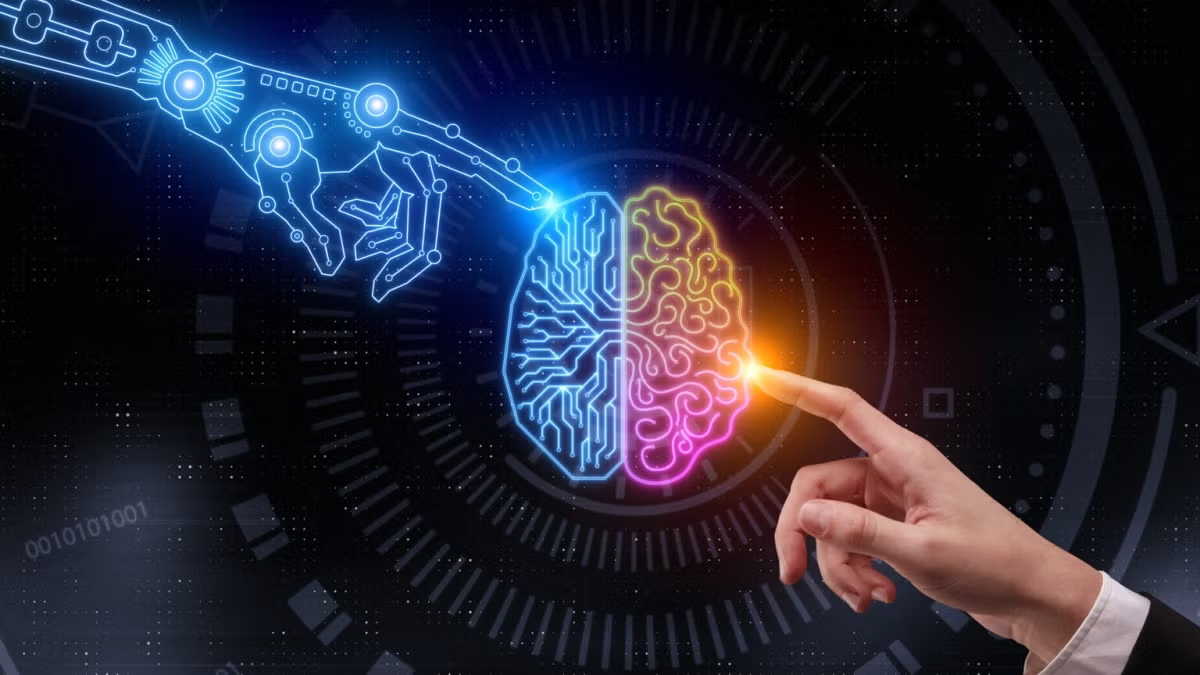
Fulton Schools faculty are leading pursuit of research advances at the intersection of psychology and engineering to help ensure our increasingly technologized world maintains a human-centric perspective. Image courtesy of Shutterstock
National security involves increasingly sophisticated technologies, relying on the ever-advancing capabilities of artificial intelligence, robotics and autonomous systems to maintain vigilance against subterfuge and potential threats to public safety.
Today, especially in science, engineering and industry, people do not so much operate technology as they engage and collaborate with it through various complex forms of human-computer interactions and cyberspace connections, said Jamie Winterton, the director of strategy for Arizona State University’s Global Security Initiative, or GSI, which she describes as a cross-disciplinary research interface to the U.S. Department of Defense and intelligence community.
What’s now essential to the success of national defense and many similarly critical security endeavors is establishing robust and reliable partnerships between humans and our high-tech tools.
Winterton says that’s why GSI’s most important collaborators include experts in improving our relationships with the powerful and interactive technologies we are creating — faculty members and researchers in the human systems engineering program in The Polytechnic School, one of the six Ira A. Fulton Schools of Engineering at ASU.
“There’s now a broad recognition that incorporating human-centric perspectives into developing technology is extremely important,” Winterton said, “especially if you’re using this technology for military or other defense operations.”
Accomplishing that involves working at the “intersection of psychology and engineering, and integrating people into the equation” when designing and deploying technology, said Professor Nancy Cooke, a faculty member in the human systems engineering program who is highly regarded in the field.
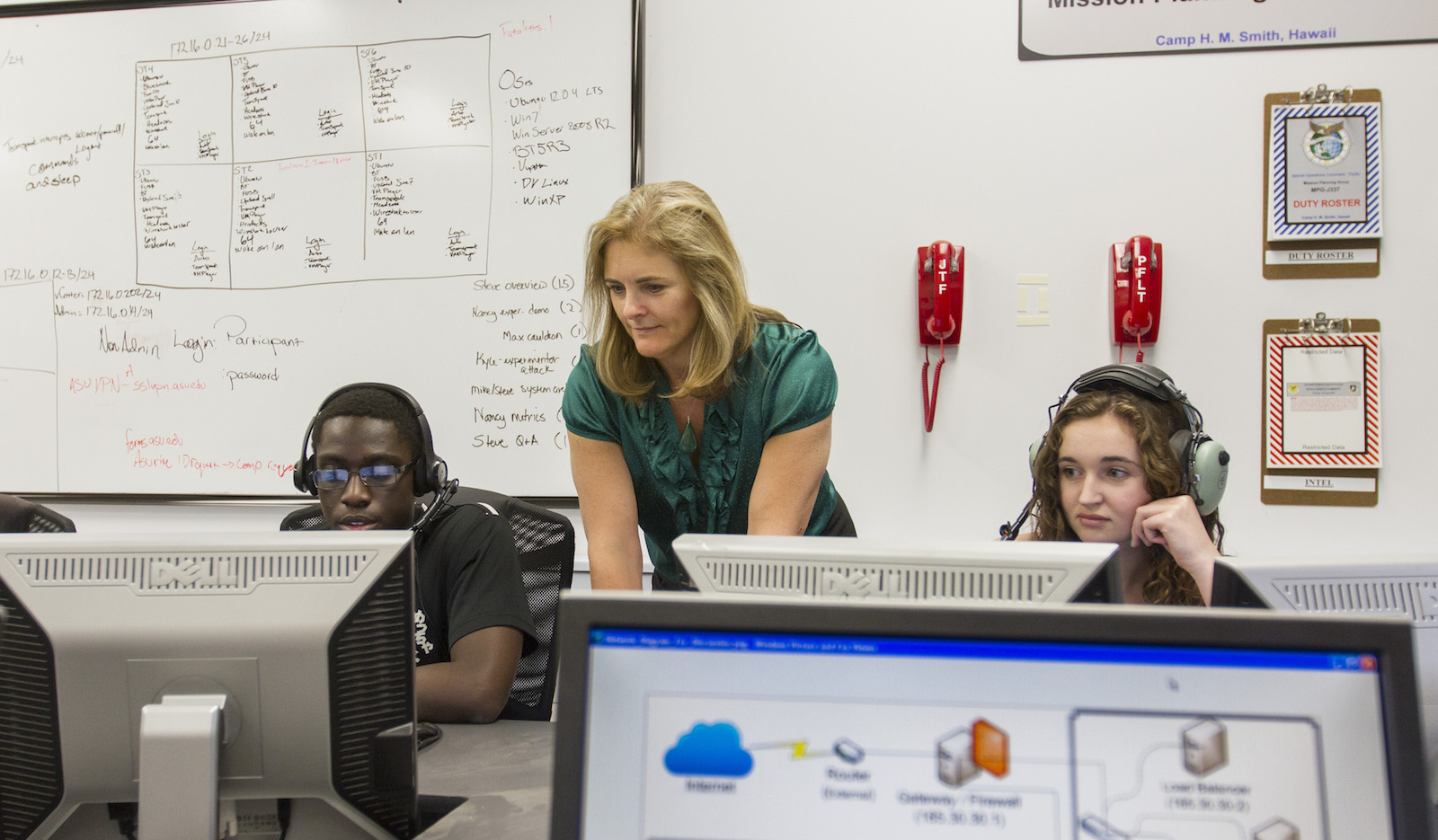
In the Cognitive Engineering Research on Team Tasks Lab, Professor Nancy Cooke (standing) guides students in human systems engineering studies, focusing on team planning and decision-making in such areas as cybersecurity, big data analytics, military operations and unmanned vehicles. Photo by Jessica Hochreiter ASU.
Note: The photos in this story are illustrative of the programs included. They are archival images taken before the current pandemic social distancing and face covering requirements went into effect.
The human systems engineering field sprang in part from seeking solutions to basic technical problems, Cooke explained. One case involved airplane accidents during World War II that were the result of poor control systems. Industrial engineers and psychologists teamed up to address both the technical system design issues and the mental factors that were determining pilots’ actions.
Today, this branch of engineering has expanded its scope beyond a strictly technology-related focus. Cooke points, for example, to the recent book co-edited by two of the program’s faculty members, Associate Professor Rod Roscoe and Assistant Professor Erin Chiou, “Advancing Diversity, Inclusion, and Social Justice through Human Systems Engineering.” Cooke wrote the first chapter, “Human Systems Engineering for Societal Transformation: A Tale of Two Cities.”
Seeing engineering through lens of psychology
The range of expertise among the faculty is also a distinctive feature of the program in the Fulton Schools.
“Almost all other human systems engineering and human factors programs are either in industrial engineering departments staffed by industrial engineers or are in psychology departments staffed by human factors psychologists,” Cooke said. “Most of our faculty are trained in cognitive science but we are in an engineering school. This creates unique opportunities to teach engineers about human capabilities and limitations and to collaborate on research with engineers, and we have been doing both.”
Roscoe says human system engineering has emerged from a “co-evolution of many fields,” which, as a result of that growth process, can offer to teach skills important for careers in many areas.
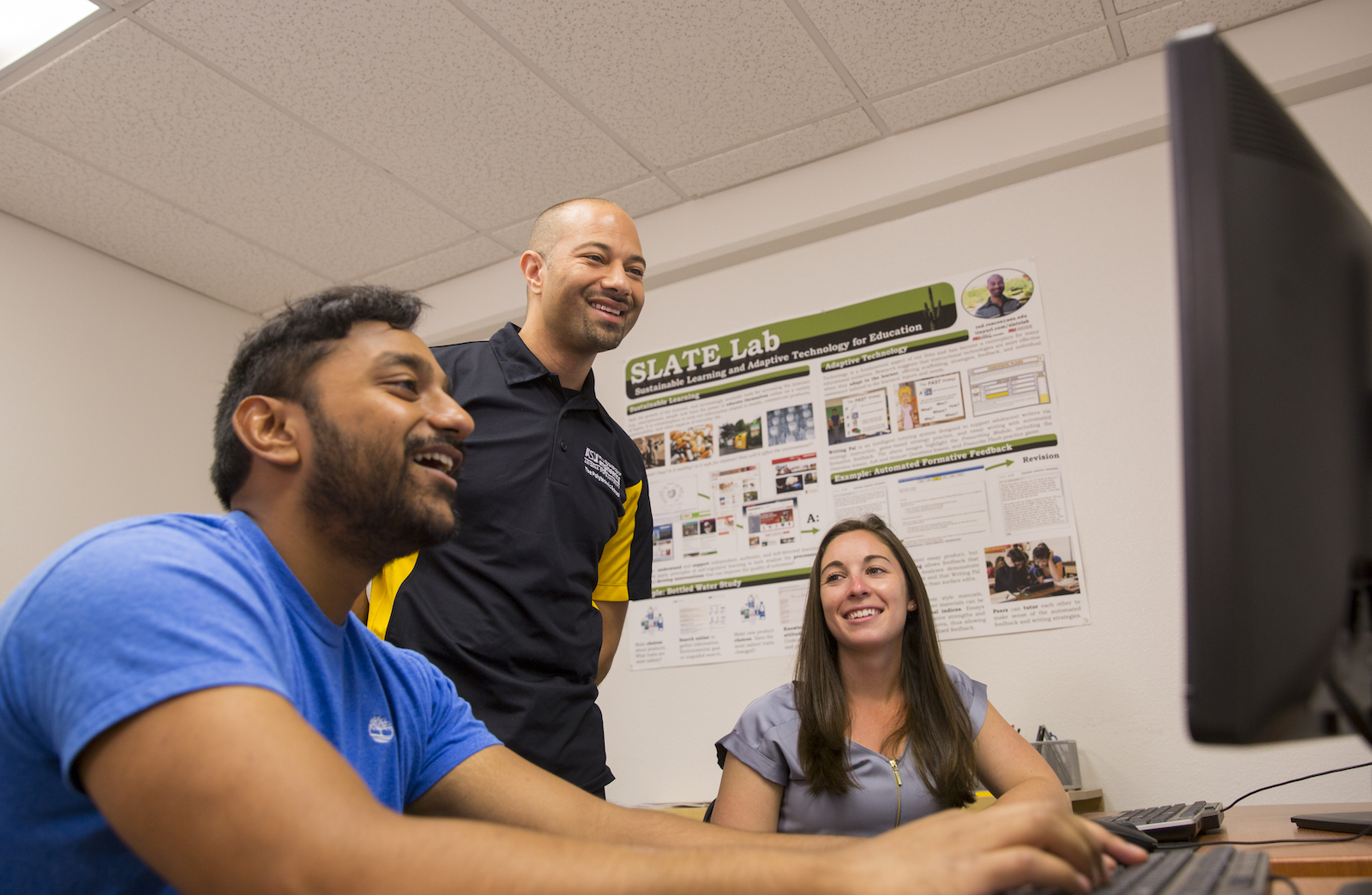
Associate Professor Rod Roscoe (standing) talks with students in his Sustainable Learning and Adaptive Technology for Education Lab. Research in the lab focuses on applying human systems engineering approaches to explore how computer-based tools can be designed and used to enhance learning, as well as to create new ways to learn. Photo by Jessica Hochreiter/ASU
“Everything that is engineered is designed for people and by people. So the thoughts, feelings and behaviors of people are fundamental to every aspect of engineering,” Roscoe said. “Knowledge of psychology allows us to understand what people need to do, what they want to do, what mental processes and resources they possess, and how their tools and environments contribute to these factors.”
Chiou says the field is an ideal choice “if you are interested in what motivates people, because you get to study those motivations and then use that knowledge to make the world a better place.”
Providing a platform for education and training design
Associate Professor Rob Gray conducts research on perceptual-motor control with an emphasis on the demanding physical activity required in driving, aviation and sports — including designing effective sports training and driver safety training programs — with a focus on both the technology and the psychology involved in those pursuits.”
That work reflects the growing potential for using human systems engineering to advance educational design by providing more effective approaches to both hands-on teaching and learning, said Gray, the program’s undergraduate studies chair.

Using a large-scale driving simulator for user experience research in Associate Professor Rob Gray’s lab, Jaimie McNabb views various types of visual, auditory and tactile collision warnings that drivers can encounter in foggy conditions. Photo courtesy of Robert Gray
The education focus in the program is set to expand. Mary Niemczyk, an associate professor in The Polytechnic School’s aviation program, will lead a new concentration in studies that apply human systems engineering principles to aviation.
Niemczyk says aviation encompasses all the fundamentals of human systems engineering — the full combination of technology, psychology, the design of safety training and technical education, along with the human and environmental interactions experienced during flight operations.
“Flying involves a very complex set of dynamics and variables. So many things are involved in trying to ensure a safe and efficient aviation system,” Niemczyk said. “We’re going to take a deep dive into all of it and it’s going to be valuable not only for students in the aviation programs but also for the aviation industry.”
More industries seeking expertise in the field
Human systems engineering courses are proving to be attractive to students majoring in other disciplines “because we bring in the human component that many students don’t get in other technology-oriented studies,” said Associate Professor Scotty Craig, the program’s current graduate studies chair.
Many of the nearly 75 students enrolled in the master’s and doctoral degree programs earned undergraduate degrees in other areas of engineering.
“We provide them the skills to apply the perspective of psychology to areas like robotics, and students are discovering this makes their work more intriguing,” Craig said.
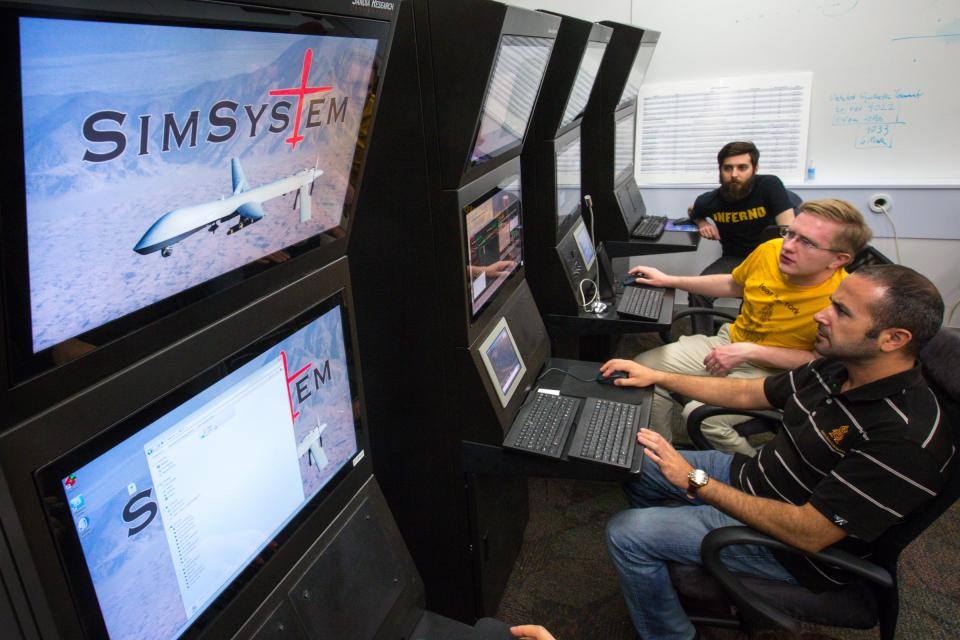
At an Unmanned Aerial System-Synthetic Task Environment experiment station, the performance of three students is monitored as they take on simulated roles as pilot, navigator and sensor operator to fly an unmanned aerial system on a series of virtual reconnaissance missions. Photo courtesy of the Fulton Schools human systems engineering program
Graduate students are also finding that industries are increasingly interested in employees who specialize in understanding how people and smart technologies can work together more proficiently.
Craig says many graduate students are getting summer internships that enable them to directly apply what they’re learning, and doctoral students typically get multiple callbacks for interviews after meeting industry representatives at job fairs.
Overall, the program’s enrollment in the bachelor’s, master's and doctoral degree programs has been increasing steadily over the past several years.
ASU alum Bryant Foster agrees that there is a growing need for human systems engineers. Foster is the vice president of human factors and user experience for Research Collective, a consulting company he co-founded.
Most of the company’s clients are in the health care field, an industry that Foster says recognizes the critical role of the human factors approach in developing new products and technology.
“If you don’t implement human systems engineering, if you’re not considering the characteristics of the users when you design products, then you run a risk of designing products that are difficult to use and possibly even unsafe,” Foster said, adding that the prospects for those entering the field “are very bright across many industries.”
In collaboration with the human systems engineering program, he co-founded a student mentorship program that introduces students to professionals in variety of industries.
A catalyst for engineering social progress
Earning a doctoral degree in engineering education and systems design and a master’s degree in human systems engineering at ASU is how Katreena Thomas is preparing to realize her aspirations to foster engineering that goes beyond what it can contribute to technological innovation.
Thomas wants to help engineering culture evolve as a force for positive social change. Her goals focus on how to educate engineers to be cognizant of the impacts of their work from an ethical standpoint.
“Our responsibility as engineers is to serve society, and we have to ensure we are doing that in ways that don’t exclude some groups of people from its benefits,” Thomas said.
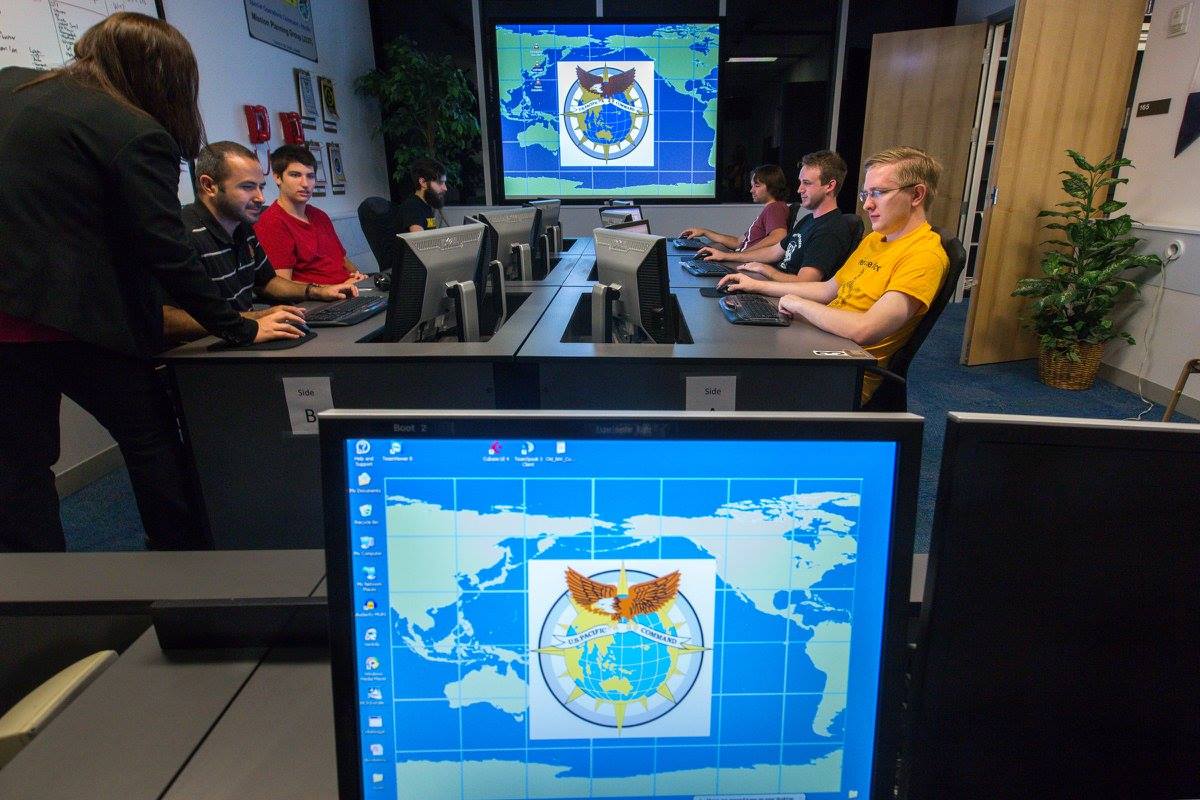
In a team decision-making lab exercise, a group of students engage in simulated scenarios involving military noncombatant evacuation operations, cybersecurity analysis and intelligence data analysis. Students then collect and evaluate data on team cognition and team performance. Photo courtesy of the Fulton Schools human systems engineering program
She sees the potential of human systems engineering to be a catalyst “for using our engineering powers for good,” to make inclusiveness, diversity and social unity integral to the profession’s value system.
Cooke says embedding social responsibility and ethics into the fabric of engineering is already central to the mission of ASU’s program.
“Our main thrust is engineering that directly helps people and brings people together, and serves society. I think that is what is attracting more people to this field,” she said.
“We are turning to technology for solutions to our biggest problems,” Cooke said. “So, I think it’s more crucial than ever to seriously weigh the psychological and social impacts of these technologies, and to prioritize human welfare in all of our science and engineering.”
More Science and technology

ASU professor honored with prestigious award for being a cybersecurity trailblazer
At first, he thought it was a drill.On Sept. 11, 2001, Gail-Joon Ahn sat in a conference room in Fort Meade, Maryland.…

Training stellar students to secure semiconductors
In the wetlands of King’s Bay, Georgia, the sail of a nuclear-powered Trident II Submarine laden with sophisticated computer…

ASU startup Crystal Sonic wins Natcast pitch competition
Crystal Sonic, an Arizona State University startup, won first place and $25,000 at the 2024 Natcast Startup Pitch Competition at…